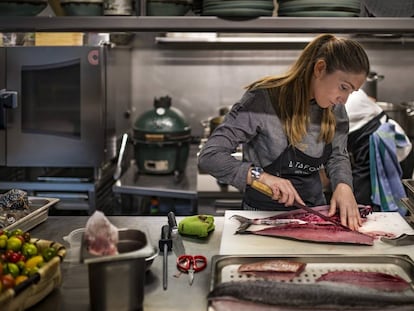Seven Spanish cities with free tapas
The costless nibble with your drink is at once an art, a tradition and a religion; here are our recommendations for a number of places where free snacks are de rigueur
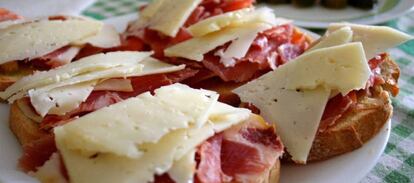
The origins of the Spanish ‘tapa’ are steeped in myth and explained by a number of anecdotes, some more credible than others. It is said, for example, that one particular tavern offered the king – exactly which king, depends on who is telling the tale – a glass of wine and fearing that a fly – or a speck of dust – might fall into the royal refreshment, placed a slice of ham on top. The king, a jovial sort, then asked for another drink with the same “tapa” – from ‘tapar’ meaning to cover.
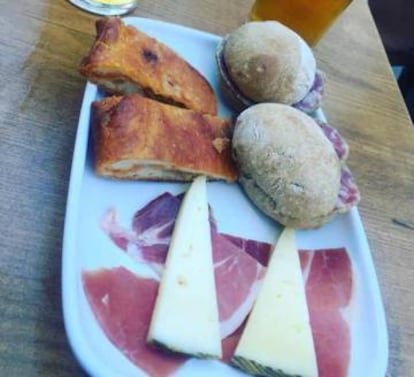
Another anecdote tells how Alfonso X’s physicians instructed him to drink a certain amount of alcohol a day for medicinal reasons. To ensure the king wasn’t dubbed El Bolinga – the wasted one – instead of El Sabio – the wise one, he was given something to eat with every dose to avoid becoming inebriated.
A further medicinally-themed anecdote claims that King Carlos III decreed that no wine should be served without bread – presumably a decree that could be historically proven with a little research. It also seems that tapas were invented during the reign of the Catholic Kings. Some claim they were created to fuel the bravado of the troops, as the Christian reconquest of the Iberian Peninsula needed a boost; others say it was to avoid fist fights in the taverns between the soldiers.
Less colorfully, but more likely is that the famous Spanish tapa has its origins in the grocery stores of Andalusia toward the end of the 19th century. The trend was later exported to Madrid as people migrated. Food shortages in post-war Spain produced a need for cheap and functional nourishment that could sustain the population. There was also a social element that increased the popularity of tapas. Then came the tourists who loved this peculiarly Spanish tradition. As the Galician politician Manuel Fraga said – we have always been different.
What is served as a tapa varies according to region but in general it is a mouthful of something simple, practical and cheap. Divided into categories, the first consists of ready-made snacks such as nuts, crisps, olives, cured meat and cheese. The fact these require no preparation is no guarantee of quality, however; you might get an exquisite slice of Manchego but you might equally be presented with a rancid nut or a moldy piece of ham.
The second category contains food that can be easily cooked up, such as garlic potato salad patatas con alioli), Russian salad (ensaladilla), stew (guiso), and consommé (caldo). This has the advantage of being home-made as well as easily dished out.
The famous Spanish tapa most likely has its origins in grocery stores of Andalusia the end of the 19th century
The third category consists of all things fried. Nowadays, we don’t hear the end of steaming and baking but anyone in their right mind knows that frying is the pinnacle of cuisine. There’s nothing like the crack and sizzle of food being slipped into hot oil. Fried fare is satisfying and – if done correctly – delicious. It is in this category that you find the croqueta, any number of fish, patatas bravas (spiced roasted potatoes), prawns and stuffed mussels (mejillón relleno).
And last but not least, there are the tapas that defy categorization, such as the tortilla, an omelette made with egg, onion and potatoes. Each region has its specialties but, in general, diversity is the key. In Galicia you can expect to be served seafood and, in Cadíz, fried anchovy (boquerón frito) but there are bars in Granada that offer hamburgers and tapa rooms in Seville where you will be served caldo as though you were in León in the middle of a bitter winter cold snap. And in the small delicatessens in Seville where the custom began, the offering is varied. Which is, without a doubt, part of the fun.
Fascinated by the tapa, I sent forth my informers like knights in search of the Holy Grail. And after much investigation, I have come up with a list of bars offering some of the best tapas in the West. The food crusade is definitely one worth packing your bags for.
1. Granada
It may not have the sea, but it does have the Alhambra, the Albaicín district, the Generalife gardens and the most generous tapas in the world. Anyone, including those on the tightest budgets, could live on the free tapas here. If it’s quantity you’re after, you should stop by El Tablón, where a couple of euros will buy you a beer with some bacon and eggs. There’s also El Arenal where they serve pork loin and chips (lomo con patatas fritas) with your first drink, fried squid with cabbage (calamares con col) with your second and hamburger with your third – no one has ever discovered what you get with your fourth. Local connoisseur José Manuel Ruiz, tells me that the fourth tapa at El Arenal has taken on mythical proportions as nobody has ever asked for a fourth round.
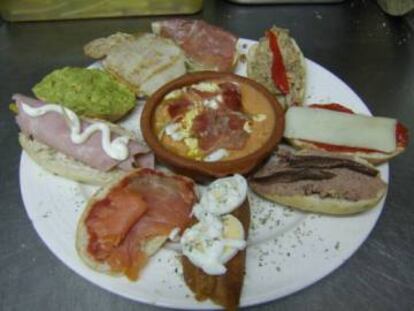
If your appetite is more restrained and your tastes more sophisticated, head over to Aliatar – Los Caracoles for some snails And if you are seeking to recreate Andalusia’s glorious past, drop in to Omka for Moroccan delights such as couscous, saluka, brewat and delicious tagines. Though some miles from the sea, Los Diamantes does fabulous fried fish and mussels.
Clearly, there’s only one thing worse than being blind in Granada, and that’s being off your food.
2. León
As part of my detective work, I wrote to the foodie Ana Vega to ask if there was anywhere in the Basque Country that offered free tapas, but her reply came back accusing me of sacrilege. I had to go to León, she said. That was the kind of place I was looking for.
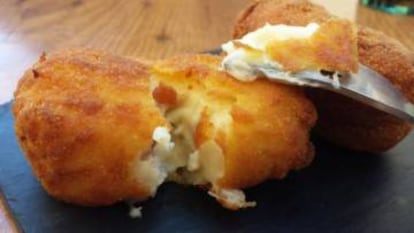
In the Húmedo and Romántico districts of the city, go to Flechazo for spicy chips (patatas fritas con picante), La Comptetencia for pizza and the Rebote for croquetas.
Close to the Gothic Cathedral, savor salmorejo (a tomato and olive oil-based cream) at the Camarote Madrid when the weather is hot, and trout soup in the Pajarín when it’s cold. And to finish off, take a stroll to the Plaza del Grano square and visit La Piconera. There you will be able to sample a mini beer, a Prieto Picudo wine or the oddly named El Butano – the butane gas.
4. Santiago
The point of real connection among Spaniards is the desire to eat cheaply and well. In Galicia, this is particularly true. In Santiago, O Cabalo Branco is a must. The best tapa here is tray of potatoes with mayonnaise, prawns, croquettes and bacon. If it’s tortilla you’re after, you have two options – La Tita and the Moha – a shortened version of the owner’s name, Mohamed Azibou El Hemam. And, every Friday in El Avión, you will – miraculously – be served crab.
5. A Coruña
In A Coruña, you should try La Bombilla. And in Lugo, the list is inexhaustible. But one of my informants, Ana Area, mentioned two bars in particular: Las Cinco Vigas and the Paprica. I admit I had no idea about the tapas scene in Lugo, but a Galician friend of mine explained that it’s like Granada, but in the north.
6. Madrid
In Madrid’s bars, there’s still a vague nod to the tradition of offering a nibble with your drink. Normally, it’s a basket of potato chips, or a plate of olives or nuts. Another classic is a piece of bread with a slice of something balancing on top – this can range from a delicious sausage to a tough old chunk of beef.
However, there is a bar in the Pico del Pañuelo – a colony built by the workers of the old slaughterhouse in Madrid – called Tapería Manxega where they offer a tapa and drink at a reasonable price. Two other spots in the area are Venta Matadero where they sometimes dish up a small plate of pasta salad or potato salad, and La Peña Atlética de Legazpi where you may be offered roasted peppers with cumin (pimientos asados con comino) that are very tasty.
Near Plaza España, the rather peculiar Taberna Mozárabe that plays baroque background music does tapas including tortilla, ensaladilla and bread with sobrasada – spicy cured sausage.
7. Seville
Down in Seville, the tapas are better. While nuts are not uncommon, La Grande, for example, offers prawns, making it worthy of review.
No doubt this list has failed to cover all the best tapas bars, so if you know of any, share them with the world in the comment section so that we can all eat and drink and be merry which is what life’s all about. Me, I always carry a napkin around with me as you just never know your luck.
English version by Heather Galloway.
Tu suscripción se está usando en otro dispositivo
¿Quieres añadir otro usuario a tu suscripción?
Si continúas leyendo en este dispositivo, no se podrá leer en el otro.
FlechaTu suscripción se está usando en otro dispositivo y solo puedes acceder a EL PAÍS desde un dispositivo a la vez.
Si quieres compartir tu cuenta, cambia tu suscripción a la modalidad Premium, así podrás añadir otro usuario. Cada uno accederá con su propia cuenta de email, lo que os permitirá personalizar vuestra experiencia en EL PAÍS.
¿Tienes una suscripción de empresa? Accede aquí para contratar más cuentas.
En el caso de no saber quién está usando tu cuenta, te recomendamos cambiar tu contraseña aquí.
Si decides continuar compartiendo tu cuenta, este mensaje se mostrará en tu dispositivo y en el de la otra persona que está usando tu cuenta de forma indefinida, afectando a tu experiencia de lectura. Puedes consultar aquí los términos y condiciones de la suscripción digital.
More information
Archived In
Últimas noticias
Most viewed
- Alain Aspect, Nobel laureate in physics: ‘Einstein was so smart that he would have had to recognize quantum entanglement’
- David King, chemist: ‘There are scientists studying how to cool the planet; nobody should stop these experiments from happening’
- Maps of the US attack on Venezuela: Targets, airspace and deployed fleet
- Key points of the military attack on Venezuela: Early morning bombings and a ‘captured’ president
- Trump says Washington will control Venezuela until there is ‘a safe transition’
